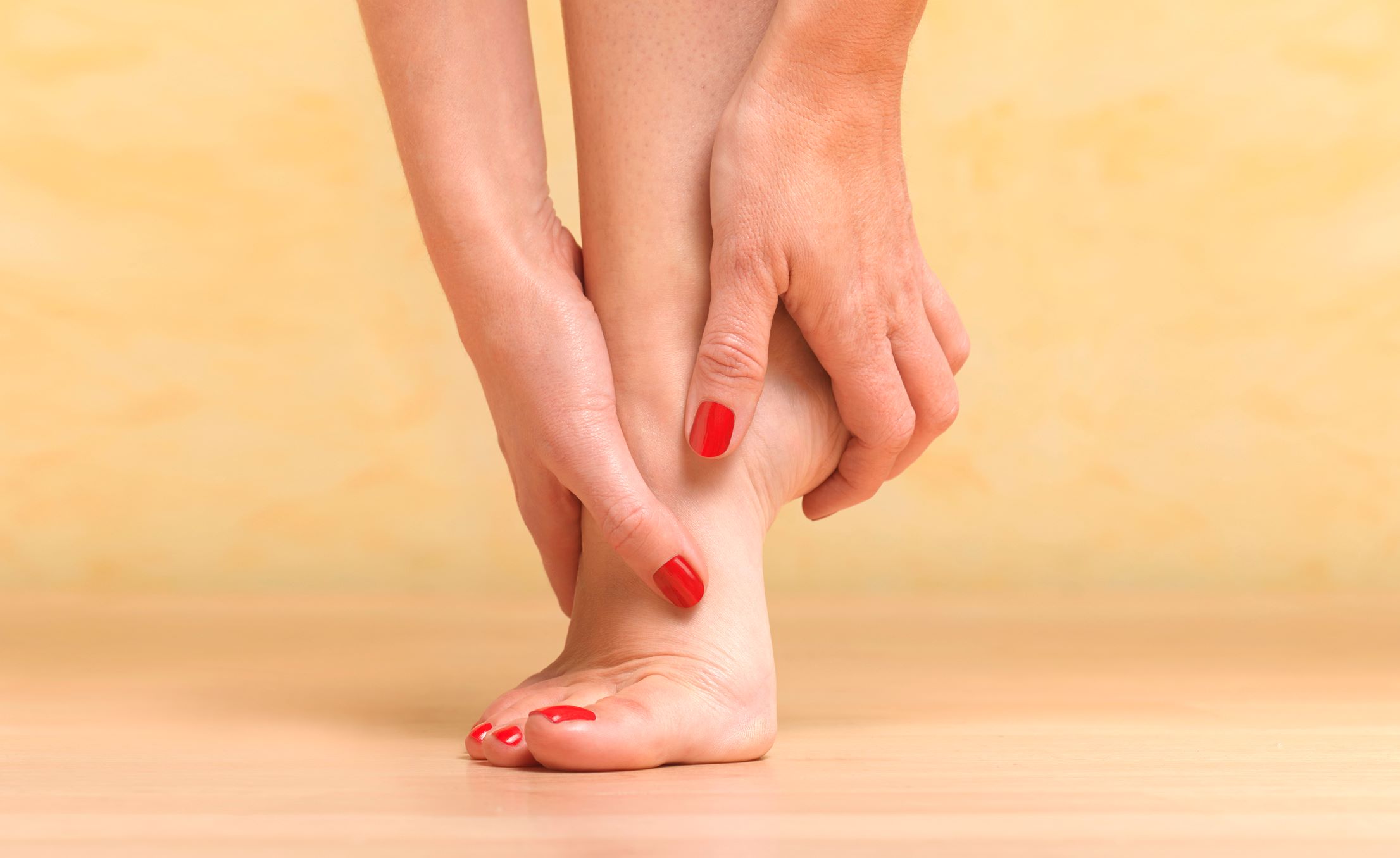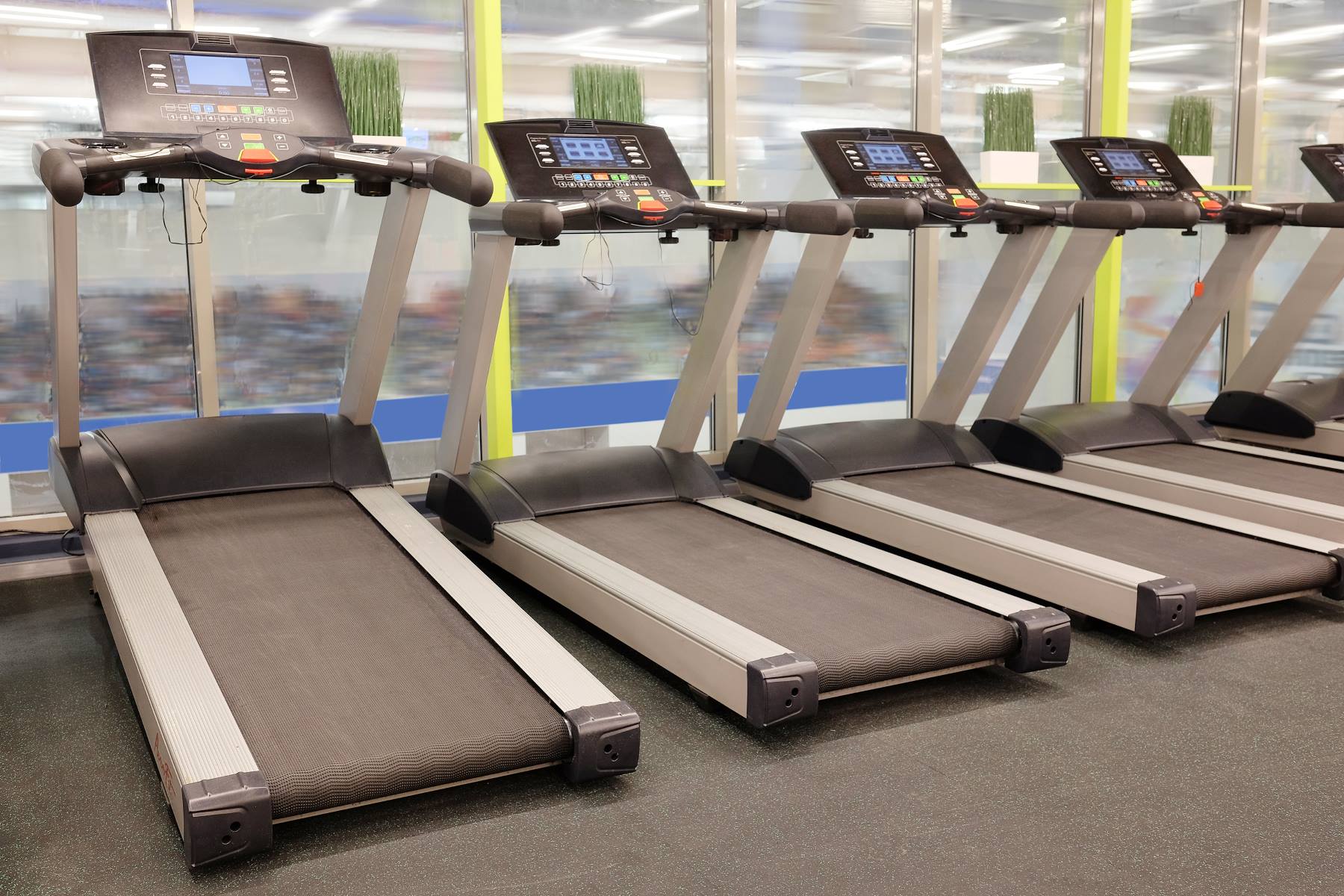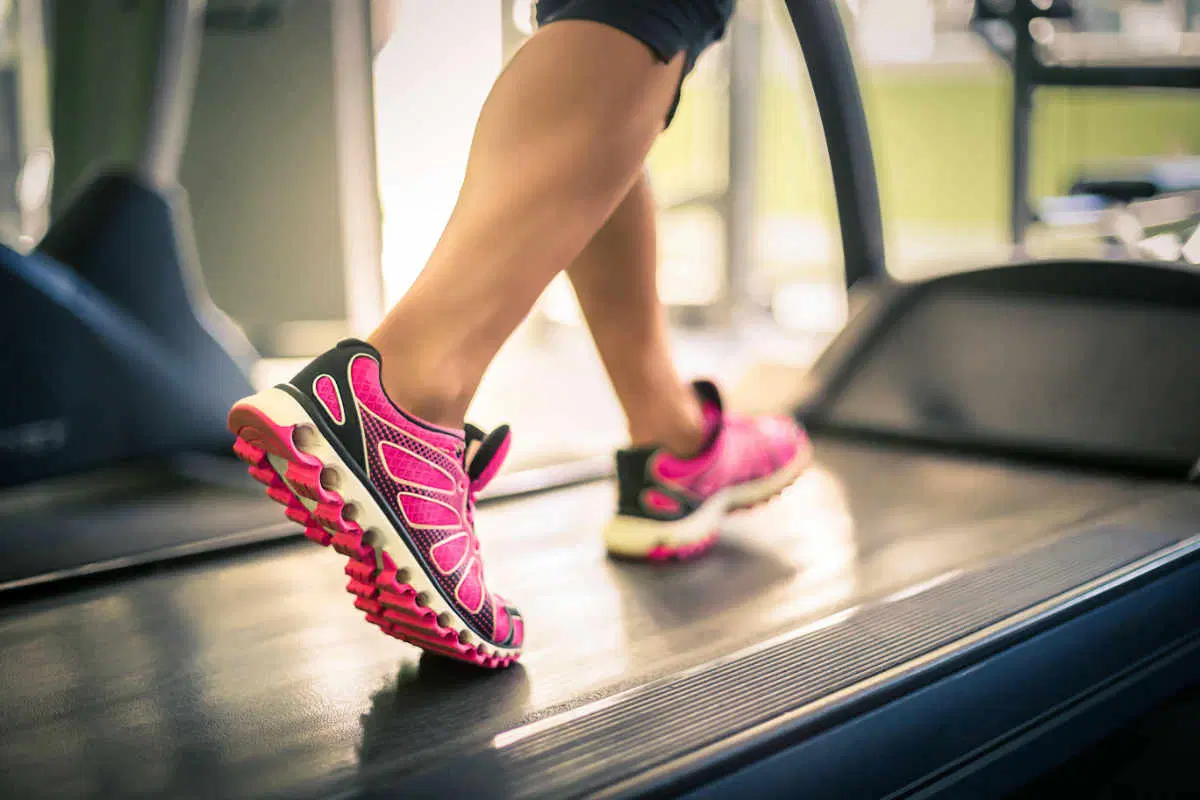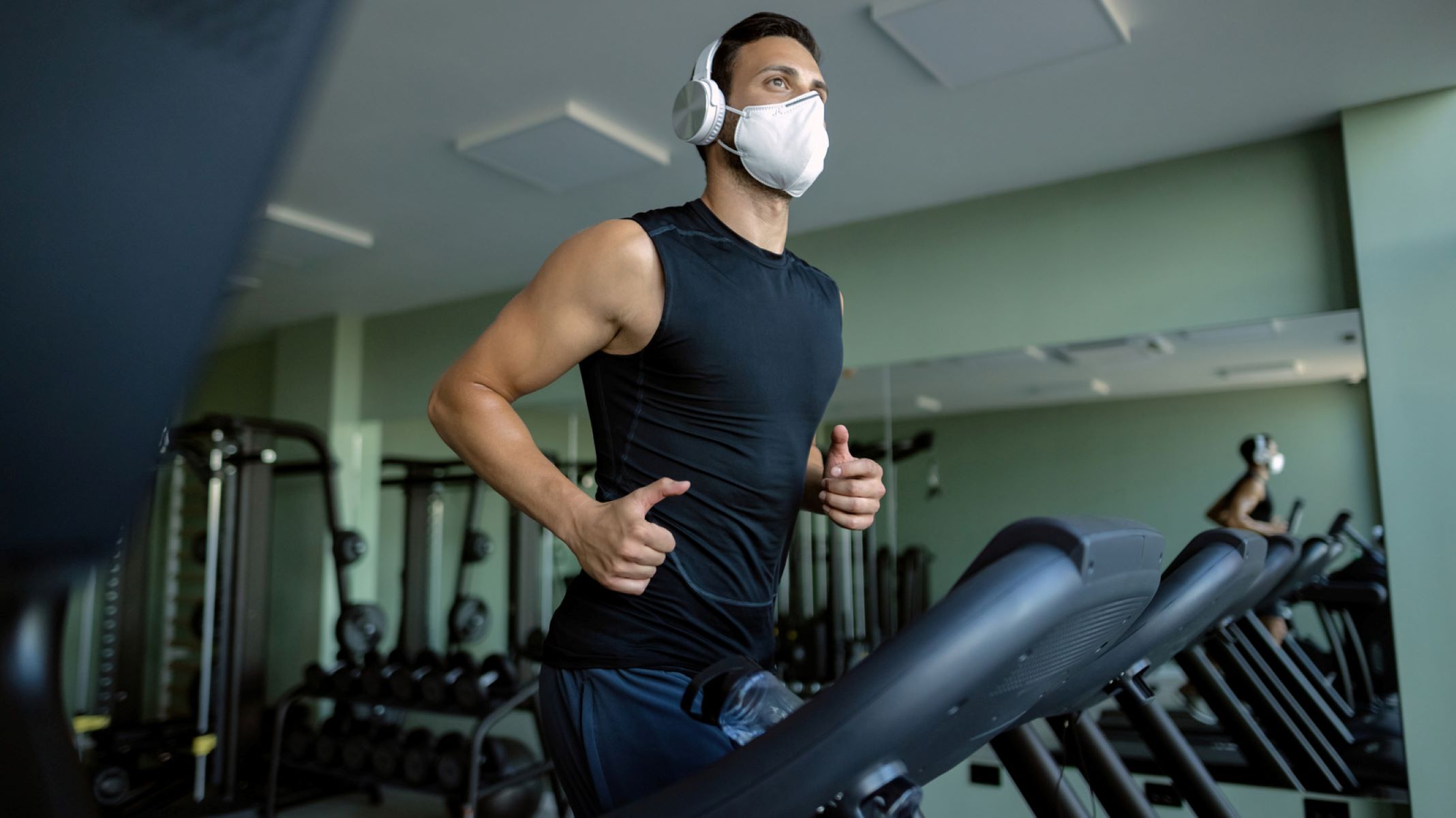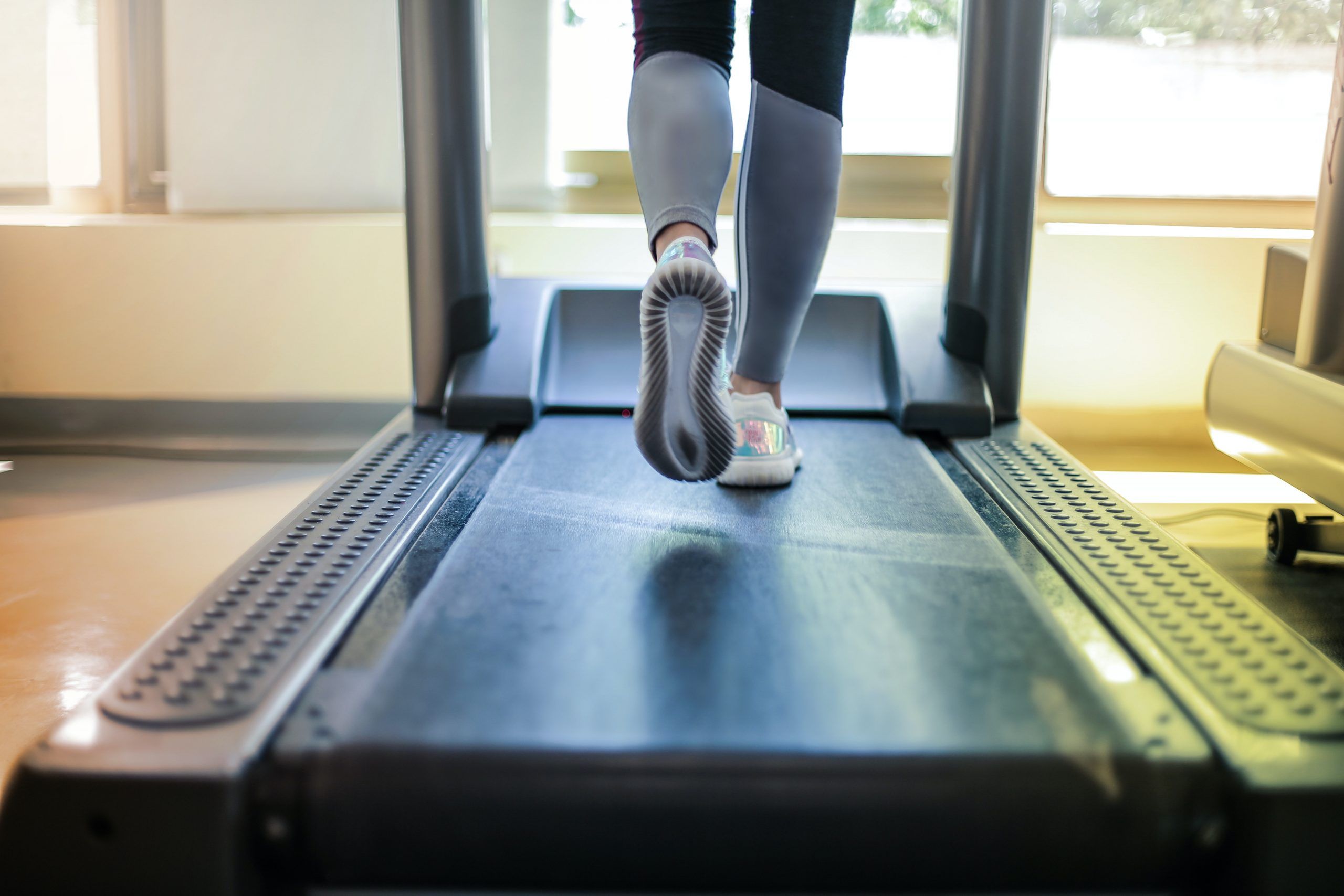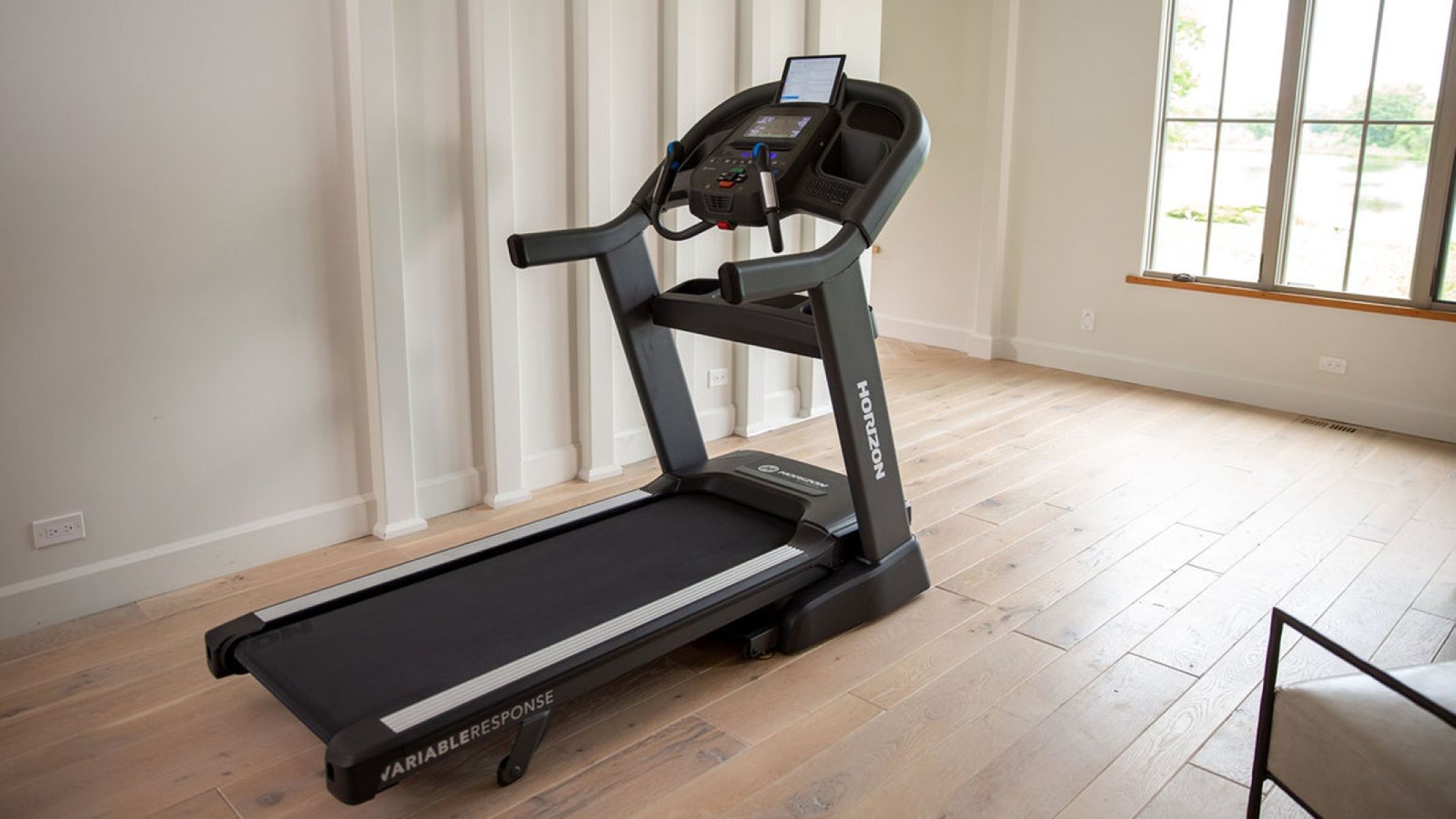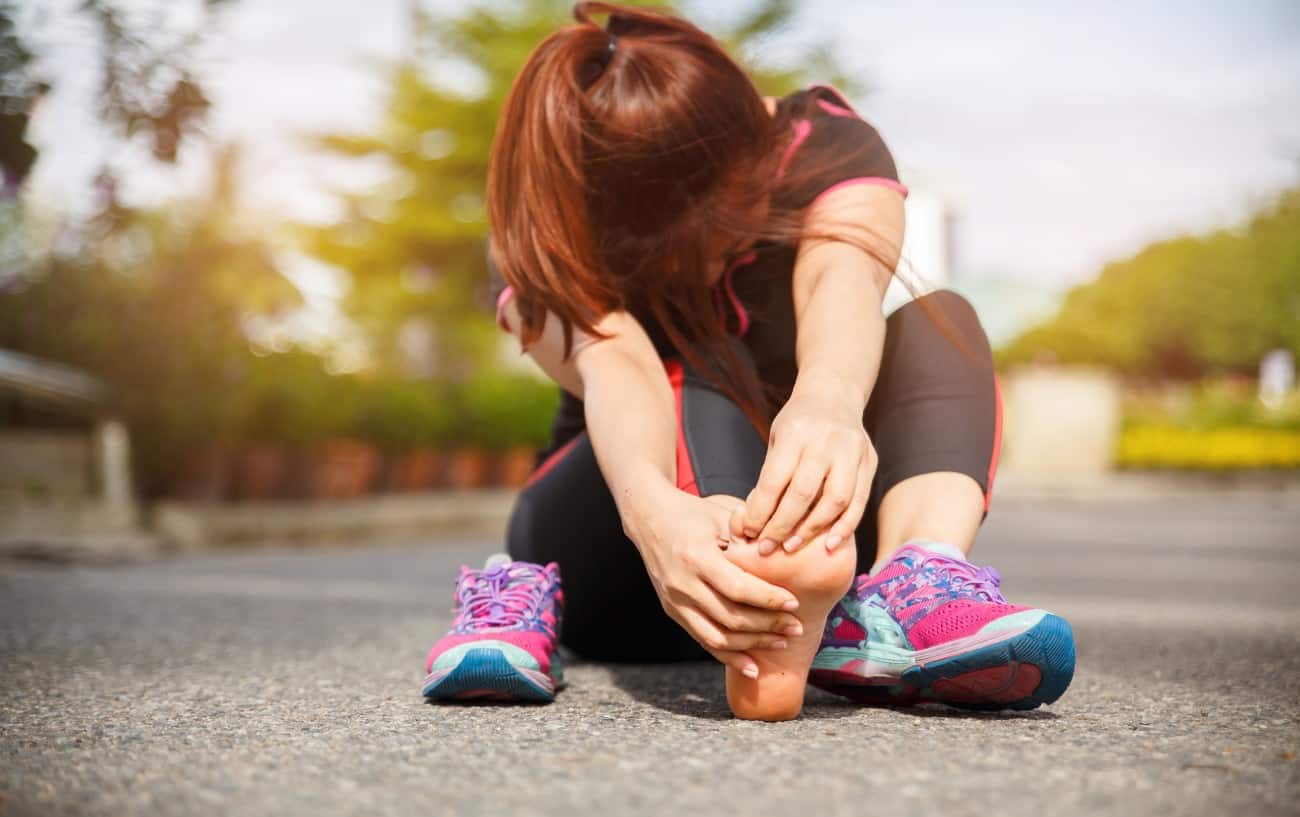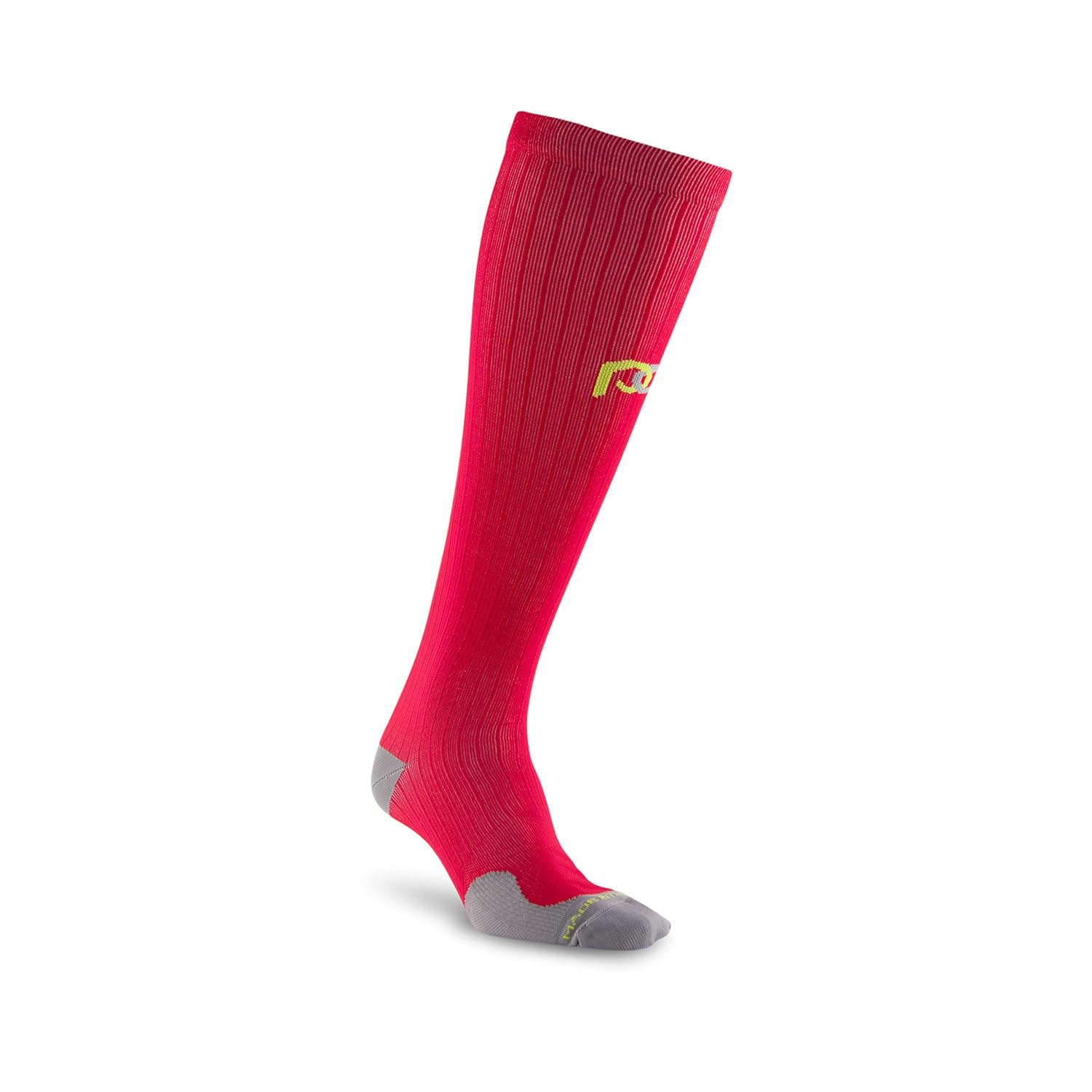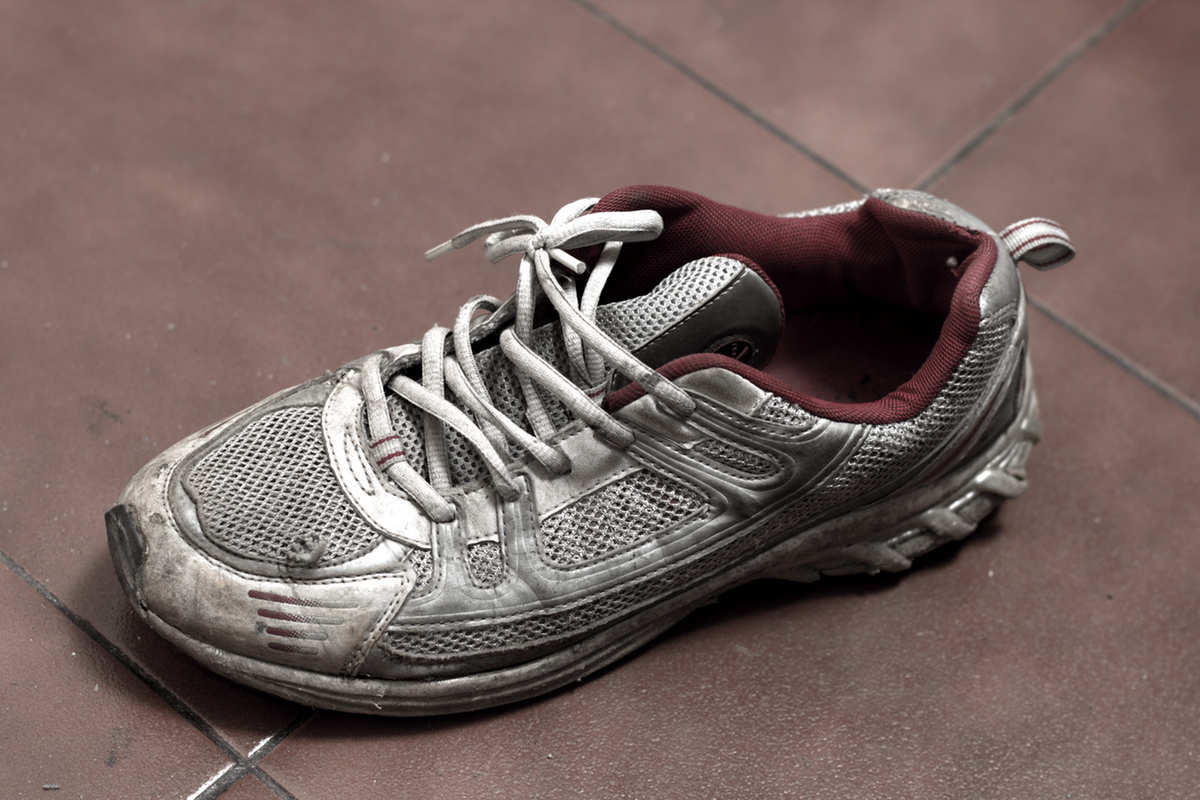Home>Misc>Featured>Why Do My Shins Hurt When Running On Treadmill?
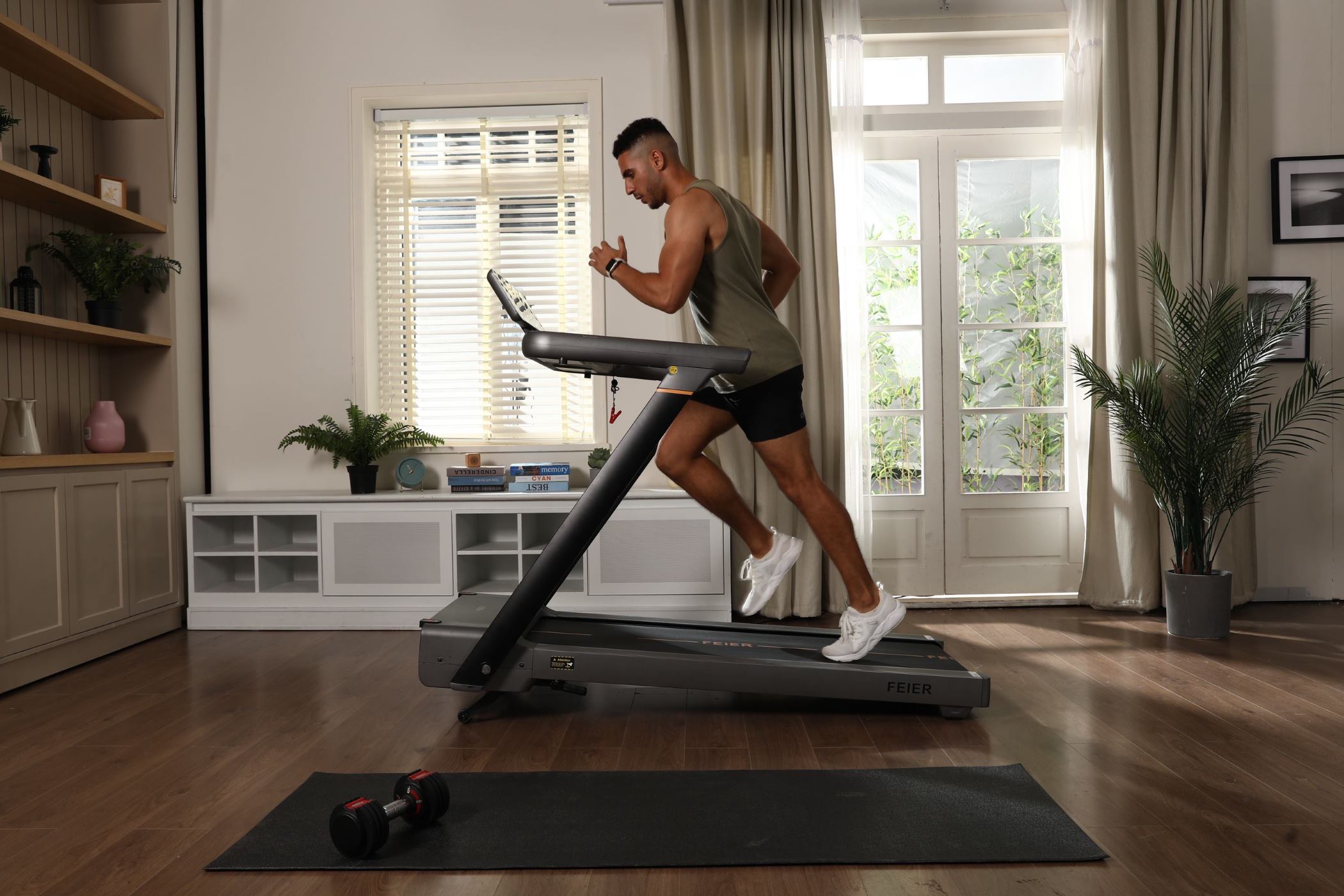

Featured
Why Do My Shins Hurt When Running On Treadmill?
Modified: October 25, 2023
Get relief from shins hurting while running on the treadmill with our featured solutions. Say goodbye to the pain and enjoy your workout again!
Introduction
Running on a treadmill is a popular form of exercise that offers convenience and accessibility. It allows you to improve cardiovascular fitness, burn calories, and stay active without having to brave the elements outdoors. However, for some individuals, running on a treadmill can result in uncomfortable shin pain. This sharp, aching sensation in the front of the lower leg can significantly hinder your running routine and even lead to more serious injuries if left untreated.
If you are experiencing shin pain while running on a treadmill, it is crucial to understand the common causes and how to address them. By making simple adjustments to your running form, choosing the right treadmill, wearing appropriate footwear, incorporating warm-up and stretching routines, and implementing strength exercises, you can alleviate shin pain and prevent future occurrences.
In this comprehensive guide, we will explore the various factors that can contribute to shin pain when running on a treadmill. We will discuss the importance of proper running form, how to select the right treadmill, the significance of wearing suitable footwear, warming up and stretching techniques, exercises to strengthen the shin muscles, the importance of avoiding overtraining, and tips for pain relief and recovery.
Whether you are a seasoned runner or just starting your fitness journey, understanding how to prevent and manage shin pain while running on a treadmill is essential in maintaining a healthy and enjoyable exercise routine.
Common Causes of Shin Pain
Shin pain, also known as medial tibial stress syndrome, is a common complaint among runners, especially when using a treadmill. Various factors contribute to this discomfort, including:
- Overuse: One of the leading causes of shin pain is overuse. Running on a treadmill for long periods without proper rest can place excessive stress on the shin bones and surrounding tissues. This repetitive strain can lead to inflammation and pain.
- Improper Running Form: Another common cause of shin pain is running with incorrect form. Striking the ground with excessive force, landing on your heels, or taking long strides can increase the impact on your shins and result in discomfort. It is essential to maintain proper posture, land on the midfoot, and keep your strides shorter and quicker.
- Inadequate Footwear: Wearing inappropriate footwear while running on a treadmill can contribute to shin pain. Shoes that lack proper cushioning and support can increase the shock absorbed by your shins, leading to discomfort and potential injury. It is crucial to invest in well-fitted running shoes specifically designed for your foot type and running style.
- Lack of Warm-up and Stretching: Failing to warm up adequately before a treadmill workout and neglecting to stretch your calf and shin muscles before and after exercise can increase the risk of shin pain. Cold muscles are more prone to injury, so taking the time to warm up and stretch properly can help prepare your body for the intensity of the workout.
- Weak Shin Muscles: Weakness in the muscles along the shin can contribute to shin pain. When these muscles are weak, they are less effective at absorbing impact and maintaining stability during running, leading to increased stress on the area. Strengthening exercises targeting the shin muscles can help alleviate this issue.
By understanding the common causes of shin pain while running on a treadmill, you can take the necessary steps to address and prevent these issues. Making the right adjustments to your running routine, equipment, and strength training can significantly reduce the discomfort and allow you to enjoy your treadmill workouts without pain or injury.
Proper Running Form
Having proper running form is essential for preventing shin pain and maximizing efficiency while running on a treadmill. Here are some key tips to help maintain correct running form:
- Posture: Keep your body upright with a slight forward lean from your ankles. Avoid slouching or leaning too far forward, as this can increase stress on your shins.
- Footstrike: Land on the midfoot with each stride rather than on your heels or toes. This helps distribute the impact evenly across your foot and lower leg, reducing strain on the shins.
- Stride Length: Maintain a shorter stride length with a quick turnover rate. Taking long strides can cause excessive pounding on the shins, leading to discomfort.
- Cadence: Aim for a cadence of around 180 steps per minute. Increasing your cadence can help reduce stress on the shins and promote a more efficient running gait.
- Arm Swing: Keep your arms relaxed with a slight bend at the elbows. They should move in a forward and backward motion, not crossing your body or swinging excessively.
- Core Engagement: Engage your core muscles to maintain stability and support good posture throughout your run. This helps reduce excessive strain on your shins.
When running on a treadmill, it can be tempting to let your focus drift or lean on the handrails for support. However, this can disrupt your form and increase the strain on your shins. Instead, stay focused on maintaining proper running form from start to finish, paying attention to your body’s alignment, foot placement, and overall posture.
Practicing and gradually incorporating these form adjustments into your treadmill running routine can help reduce the risk of shin pain and improve your overall running experience. Remember, it may take time to adjust to these changes, so be patient with yourself and listen to your body’s feedback. With consistent effort and attention to form, you can run on a treadmill comfortably and without discomfort in your shins.
Selecting the Right Treadmill
Choosing the right treadmill is crucial for preventing shin pain and ensuring a comfortable and effective running experience. Here are a few factors to consider when selecting a treadmill:
- Cushioning: Look for a treadmill with good shock absorption and cushioning. This feature helps reduce the impact on your joints, including your shins, and minimizes the risk of discomfort or injury.
- Stability: Opt for a treadmill that feels stable and sturdy. A wobbling or unstable machine can cause you to alter your gait, leading to increased stress on your shins.
- Running Surface: Make sure the treadmill offers a spacious and adequately cushioned running surface. This provides enough room for comfortable strides and reduces the impact on your shins.
- Incline and Speed Options: Consider a treadmill that allows for adjustable incline and speeds. This feature enables you to vary your workouts, reducing repetitive strain on your shins and adding variety to your routine.
- Control Panel: Look for a control panel that is intuitive and easy to use. It should provide clear feedback on your speed, distance, time, and other relevant metrics, allowing you to monitor and adjust your workout as needed.
- Noise Level: If noise is a concern, choose a treadmill that operates quietly. Excessive noise can be distracting and affect your overall running experience.
It is also beneficial to try out different models and brands of treadmills before making a purchase. This allows you to assess the machine’s feel, responsiveness, and overall comfort. Additionally, reading customer reviews and seeking recommendations from experienced runners can provide valuable insights into the treadmill’s performance and suitability for preventing shin pain.
Investing in a high-quality treadmill that addresses your specific needs and preferences can make a significant difference in reducing the risk of shin pain and enhancing your overall running experience. Take the time to research and choose wisely to ensure a comfortable and enjoyable workout routine on the treadmill.
Importance of Proper Footwear
When it comes to running on a treadmill, wearing the right footwear is essential for preventing shin pain and maintaining overall foot health. Here’s why proper footwear is crucial:
- Cushioning and Support: Running shoes are designed with specific cushioning and support systems to absorb shock and provide stability. The right footwear can help reduce the impact on your shins, redistribute the forces during each stride, and minimize the risk of discomfort or injury.
- Proper Fit: Wearing shoes that fit properly is imperative. Ill-fitting shoes can cause your feet to slide or rub against the shoe’s interior, leading to friction and potential blisters. They can also alter your gait, affecting your shin alignment and increasing the risk of shin pain.
- Arch Support: Different individuals have varying foot arch types – high, neutral, or low. Running shoes with appropriate arch support can help maintain proper alignment and reduce stress on the shin bones and surrounding tissues. Understanding your foot type and selecting shoes that cater to it can significantly contribute to shin pain prevention.
- Traction: Treadmills typically have a smooth surface, and wearing shoes with adequate traction can prevent slipping or sliding. This ensures that your foot lands firmly and securely with every step, minimizing the risk of sudden movements that can strain the shins.
- Replace Worn-out Shoes: It is essential to replace your running shoes regularly. Over time, the cushioning and support of shoes wear out, diminishing their ability to absorb shock effectively. Continuing to wear worn-out shoes can increase the strain on your shins, potentially leading to pain and injury.
Consult with a professional at a specialized running store to determine your running style, foot mechanics, and the appropriate type of footwear. They can assess your gait and recommend shoes that provide the necessary cushioning, support, and fit for your individual needs.
Remember, each person’s feet are unique, and what works for one runner may not work for another. Understanding the importance of proper footwear and investing in shoes that cater to your specific requirements can significantly contribute to the prevention of shin pain and help you enjoy your treadmill runs comfortably.
Warming Up and Stretching
Warming up and stretching before a treadmill workout is crucial for preparing your body for exercise and preventing shin pain. It helps increase blood flow to the muscles, improves flexibility, and reduces the risk of injury. Here are some warm-up and stretching tips to incorporate into your treadmill routine:
- Dynamic Warm-up: Begin your warm-up with a light jog or brisk walk on the treadmill for 5-10 minutes. This helps raise your body temperature, increase heart rate, and gradually prepare your muscles for the upcoming workout.
- Dynamic Stretches: After your warm-up, perform dynamic stretches that target the calf, shin, and other lower body muscles. Dynamic stretches involve controlled, repetitive movements that mimic the motions of running, such as walking lunges or heel-to-toe walks. These stretches help improve flexibility and range of motion while promoting blood flow to the muscles.
- Calf Stretches: It is crucial to specifically stretch the calf muscles, as tight calves can contribute to shin pain. Perform standing calf stretches by placing your hands on a wall, extending one leg behind you, and pressing your heel into the ground. Hold the stretch for 30 seconds on each leg, feeling a gentle pull in your calf muscles.
- Toe Raises: Strengthening the muscles in your feet and toes can help provide better support and balance during your run. Stand tall and lift your toes off the ground, then lower them back down. Repeat this exercise for 10-15 repetitions to engage the muscles in your feet and lower legs.
- Cooldown: After your treadmill workout, allow time for a proper cooldown. This can involve slowing down your pace gradually or walking on the treadmill for a few minutes to allow your heart rate to return to normal. This gradual transition helps your body recover and prevents the blood from pooling in your lower extremities, which can contribute to shin pain.
Remember to listen to your body while warming up and stretching. If you experience any pain or discomfort, adjust or modify the exercises accordingly. Additionally, it is important to note that stretching alone may not completely prevent shin pain. It should be combined with other strategies, such as proper running form, choosing the right footwear, and gradually increasing intensity, to effectively reduce the risk of shin pain while running on a treadmill.
By incorporating a proper warm-up and stretching routine into your treadmill workouts, you can optimize your performance, reduce the likelihood of shin pain, and enhance your overall running experience.
Strengthening Exercises for Shin Muscles
Strengthening the muscles surrounding your shins is an effective way to prevent shin pain and build resilience in the lower leg. By targeting these muscles, you can enhance your stability, improve shock absorption, and reduce the risk of discomfort while running on a treadmill. Here are some exercises to incorporate into your routine:
- Tibialis Anterior Exercises: The tibialis anterior muscle runs along the front of your shin and plays a crucial role in dorsiflexion, the movement that brings your toes towards your shins. Strengthen this muscle by performing exercises such as toe taps, where you sit with your legs extended, flex your toes up towards your shins, then tap them back down onto the ground. Repeat for 10-15 repetitions.
- Toe Curls: Sit on a chair with your feet flat on the ground. Place a small towel or cloth under your feet and use your toes to grip and curl the towel towards you. This exercise targets the muscles in the feet and lower legs, including those that support the shins.
- Resistance Band Exercises: Attach a resistance band to a sturdy object and position yourself so that the band is wrapped around the middle of your foot. Flex your foot up and out against the resistance of the band, then slowly return to the starting position. This exercise helps strengthen the muscles responsible for dorsiflexion and provides a controlled resistance to the shins.
- Calf Raises: Strong calves can help support the shins and reduce strain during running. Stand with your feet hip-width apart, rise up onto your toes, and then slowly lower your heels back down to the ground. Repeat for 10-15 repetitions to target the calf muscles.
- Balance Exercises: Improving balance and stability can indirectly strengthen the muscles around your shins. Try exercises like single-leg stands or balancing on an unstable surface, such as a Bosu ball or foam pad, to challenge your stability and engage the muscles in your lower leg.
It is important to note that when performing these exercises, start with proper form and gradually increase the intensity and repetitions over time. Incorporating these strengthening exercises into your regular routine can help build endurance, stability, and strength in the muscles surrounding your shins. As a result, you will be better equipped to handle the demands of running on a treadmill and reduce the risk of shin pain or injury.
Avoiding Overtraining
One common mistake that can lead to shin pain when running on a treadmill is overtraining. Overtraining occurs when you push your body beyond its limits without giving it enough time to recover. Here are some key strategies to help you avoid overtraining and protect your shins:
- Gradual Progression: It is essential to gradually increase the intensity, duration, and frequency of your treadmill workouts. Sudden or drastic changes can place excessive stress on your shins and increase the risk of pain and injury. Aim for incremental improvements by gradually increasing your mileage or intensity over time.
- Rest and Recovery: Rest is just as important as the actual workout. Give your body ample time to recover and rebuild muscle tissue. Incorporate rest days into your treadmill routine, and consider alternating between high-intensity and low-intensity workouts to allow for recovery.
- Listen to Your Body: Pay attention to any warning signs from your body. If you experience persistent or worsening shin pain, it may be a sign that you are overtraining. Take a break, reduce your training intensity, or seek professional advice to prevent further injury.
- Cross-Train: Incorporate cross-training activities into your routine to reduce the strain on your shins. Engage in activities such as cycling, swimming, or strength training to work different muscle groups and give your shins a break from the repetitive impact of running on the treadmill.
- Nutrition and Hydration: Proper nutrition and hydration play a vital role in supporting your body’s recovery. Ensure you consume a balanced diet with adequate nutrients to support muscle repair and drink enough fluids to stay properly hydrated.
- Sleep: Getting quality sleep is crucial for recovery and overall well-being. Aim for 7-9 hours of sound sleep each night to give your body the time it needs to repair and rejuvenate.
By implementing these strategies, you can prevent overtraining, reduce the risk of shin pain, and maintain a healthy and sustainable treadmill running routine. Remember, everyone’s body is unique, so it’s essential to listen to your own body’s needs and make adjustments accordingly. It’s far better to progress gradually and protect your shins than to push too hard and end up sidelined with injuries.
Tips for Pain Relief and Recovery
If you are already experiencing shin pain while running on a treadmill, there are several tips you can follow to help alleviate discomfort and aid in the recovery process. Here are some helpful strategies:
- Rest and Ice: Take a break from running or any high-impact activities that worsen your shin pain. Apply ice to the affected area for 15-20 minutes several times a day to reduce inflammation and relieve pain.
- Compression: Consider wearing compression socks or sleeves to help reduce swelling and provide support to the shins. Compression garments can improve blood flow, aid in recovery, and alleviate pain.
- Elevation: Whenever possible, elevate your legs to reduce swelling and promote blood circulation. Prop your legs up with a pillow or elevate them above your heart while lying down.
- Modify Workouts: If running on a treadmill exacerbates your shin pain, consider low-impact alternatives such as swimming or cycling to maintain cardiovascular fitness. These activities place less stress on the shins while still allowing you to stay active.
- Stretch and Foam Roll: Incorporate gentle stretching and foam rolling exercises into your routine. Focus on stretching the calf muscles and using a foam roller to release tension in the shins. Be careful not to overstretch, as this can exacerbate the pain.
- Seek Professional Help: If the shin pain persists or worsens, consider seeking guidance from a healthcare professional or a sports medicine specialist. They can provide a proper diagnosis, recommend appropriate treatment options, and offer targeted exercises or therapies to aid in recovery.
- Gradual Return to Running: Once you are pain-free and have received clearance from a healthcare professional, gradually reintroduce running on the treadmill. Start with shorter distances and lower intensities, allowing your body to gradually adapt and build strength.
Remember, recovery takes time, and rushing the process can lead to further injury. Patience and active rest are key in allowing your body to heal and regain strength. Listen to your body, make adjustments as needed, and prioritize proper techniques and strategies to prevent future shin pain while running on a treadmill.
Conclusion
Running on a treadmill can be a fantastic way to improve your fitness and stay active, but experiencing shin pain can put a damper on your workout routine. By understanding the common causes of shin pain, maintaining proper running form, selecting the right treadmill, wearing appropriate footwear, warming up and stretching adequately, incorporating strengthening exercises, avoiding overtraining, and utilizing pain relief and recovery strategies, you can effectively prevent and manage shin pain while running on a treadmill.
Remember, prevention is key. Taking proactive measures such as gradually increasing your training intensity, listening to your body’s cues, and cross-training can help prevent overuse injuries to your shins. Additionally, paying attention to your running form, selecting the right equipment, and wearing proper footwear can significantly reduce the impact on your shins and minimize discomfort.
If you do experience shin pain, it is important to prioritize rest, ice, compression, and elevation to reduce inflammation and promote healing. Implementing appropriate stretching and foam rolling exercises, along with seeking guidance from healthcare professionals if needed, can aid in your recovery process.
Every individual is different, and it may take some trial and error to find what works best for you. While shin pain can be frustrating, with patience, proper technique, and a comprehensive approach to prevention and recovery, you can overcome it and continue enjoying your workouts on the treadmill.
By implementing these strategies and taking care of your shins, you can confidently run on a treadmill, maintain a healthy exercise routine, and reach your fitness goals without the impediment of shin pain.
